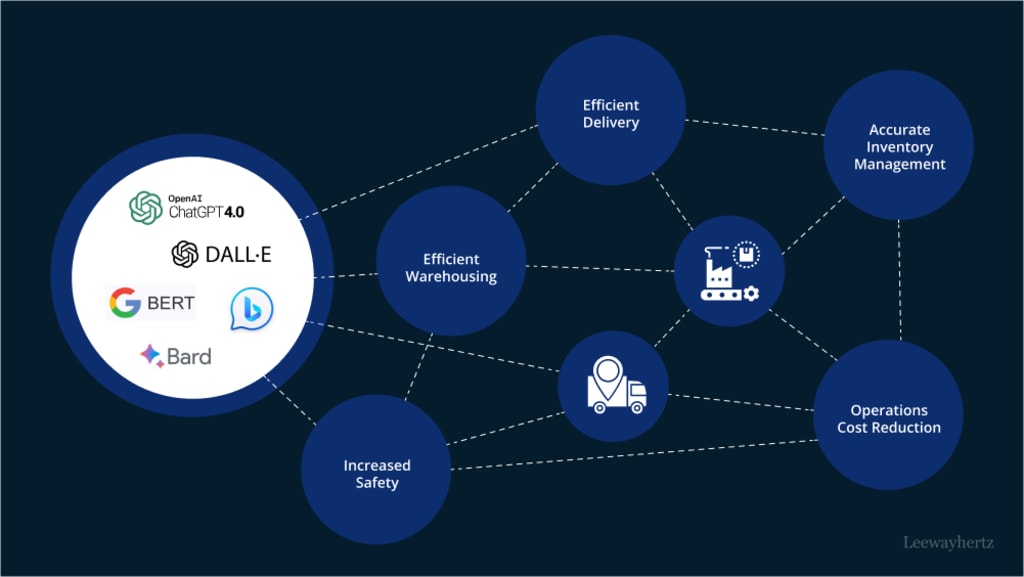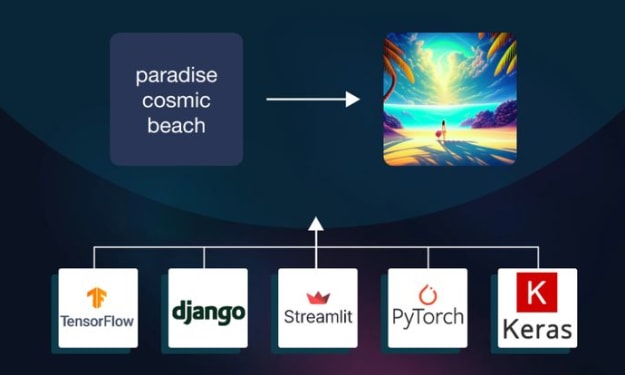Generative AI in Supply Chain: The Next Frontier
The Power of Generative AI in Supply Chain Management

Generative AI is a rapidly evolving field that has the potential to revolutionize supply chain management. By generating new data, insights, and solutions, generative AI can help businesses to improve their efficiency, agility, and resilience.
One of the most promising applications of generative AI in supply chain is in demand forecasting. By analyzing historical data and market trends, generative AI can generate more accurate demand forecasts than traditional methods. This can help businesses to optimize their inventory levels and avoid stockouts or overstocks.
Generative AI can also be used to optimize transportation routes. By considering factors such as shipment volume, product characteristics, and geographical constraints, generative AI can generate the most cost-effective and time-efficient routes for transporting goods. This can help businesses to reduce their transportation costs and improve their delivery times.
In addition to demand forecasting and transportation optimization, generative AI can also be used to improve other aspects of supply chain management, such as:
- Inventory management
- Risk management
- Compliance
- Sustainability
As generative AI continues to develop, it is likely to have an even greater impact on supply chain management. By automating tasks, generating insights, and providing new solutions, generative AI can help businesses to become more efficient, agile, and resilient.
Here are some specific examples of how generative AI is being used in supply chain today:
Walmart is using generative AI to optimize its inventory levels. By analyzing historical sales data, Walmart can generate more accurate demand forecasts and ensure that it has the right amount of inventory on hand to meet customer demand.
UPS is using generative AI to optimize its transportation routes. By considering factors such as shipment volume, product characteristics, and geographical constraints, UPS can generate the most cost-effective and time-efficient routes for transporting goods.
Nike is using generative AI to design new products. By analyzing customer preferences and market trends, Nike can generate new product designs that are more likely to be successful.
These are just a few examples of the many ways that generative AI is being used in supply chain today. As the technology continues to develop, we can expect to see even more innovative applications of generative AI in supply chain in the years to come.
Benefits of Using Generative AI in Supply Chain
The use of generative AI in supply chain can offer a number of benefits, including:
Improved efficiency: Generative AI can help to automate tasks and processes, which can free up human resources for other tasks. This can lead to improved efficiency and productivity.
Increased accuracy: Generative AI can help to improve the accuracy of demand forecasts and transportation routes. This can help to reduce costs and improve customer satisfaction.
Enhanced flexibility: Generative AI can help businesses to be more flexible and adaptable to change. This is important in a rapidly changing environment.
Improved decision-making: Generative AI can help businesses to make better decisions by providing insights and recommendations. This can help to improve profitability and reduce risk.
Challenges of Using Generative AI in Supply Chain
There are also some challenges associated with using generative AI in supply chain, including:
Data requirements: Generative AI requires large amounts of data to train and operate. This can be a challenge for businesses that do not have access to large datasets.
Complexity: Generative AI is a complex technology. This can make it difficult for businesses to understand and implement.
Bias: Generative AI models can be biased if they are trained on data that is biased. This can lead to inaccurate results.
Conclusion
Generative AI is a powerful technology that has the potential to revolutionize supply chain management. However, there are some challenges that businesses need to be aware of before they adopt this technology. By understanding the benefits and challenges of generative AI, businesses can make informed decisions about whether or not to adopt this technology.
About the Creator
Enjoyed the story? Support the Creator.
Subscribe for free to receive all their stories in your feed. You could also pledge your support or give them a one-off tip, letting them know you appreciate their work.





Comments
There are no comments for this story
Be the first to respond and start the conversation.